
SPRING AND SUMMER CLEANUP
November 4, 2020 - I generally try to keep my journals within a month or two of when I've take the photos, but I'm so far behind that I'm resigned to never catching up. I got behind because instead of maintaining the chronological sequence I diverged by focusing on two specific topics. Journal 455 focused on the amazing midshipman fish and its one way symbiotic relationship with the majestic Bald Eagles. Journal 456 featured the serendipitous spring arrival of a beautiful male Mandarin Duck and it's fairy tale romance with a charming female Wood Duck. After that I lost two months because of my decision in late August to release my new book before the onset of the second wave of COVID 19 which proved to be a wise move.
Thanks to articles in the Times - Colonist article by Darren Kloster and a Nanaimo Bulletin article by Josef Jacobson a tsunami of interest and orders completely devoured me for eight weeks. It was crazy but crazy good, and I am totally grateful for the news articles. Darren's article allowed me to access the Victoria market which is the largest on the island. Josef's article targeted the Nanaimo market but quadrupled in effectiveness when it was picked up by Black Press affiliates in Parksville, Comox Valley, and Campbell River. The most difficult part of self-publishing is marketing, and without the articles, it would have been difficult to get the word out about my book. One other source of publicity was kindly offered by prolific birder, Melissa Hafting, who put the word out to her many contacts. Melissa also moderates the BCBIRD ALERT and included my book along with her other recommended reads.
Interest in nature and birding has definitely increased with the onset of COVID 19 and has a positive impact on book sales. But, even with the second wave gaining momentum, interest has finally subsided, and I am finally seeing the light of day again. In my last journal our spring ducks, seabirds, and shorebirds were heading to their respective breeding ranges. Since then the shorebirds and their young have already returned south and many of our seabirds back here on their traditional wintering grounds. In other words, I have completely missed some late spring items and the entire summer season, and now it's time to play a little catch up before fall slips away and winter sets in.
VAUX'S SWIFT
The chimney roosting Vaux's Swifts is another of the intriguing and fascinating avian spectacles seen on Vancouver Island. The phenomena occurs in many locations along the migratory path of the swifts but on Vancouver Island the only known location is Courtenay Museum and the time is early evening during late April through most of May. I made three runs to Courtenay for the privilege of witnessing the spectacle and the most productive trip was on May 6 when approximately 1,200 swifts circled before diving into the museum chimney shortly after sunset. I was joined by 49 other naturalists and birders including Krista Kaptein who has become the local expert after monitoring the swifts for the past three years.
The Vaux's is a short, chubby, rotund bird that is often referred to as a cigar with wings. It is an insectivore consuming up to 20,000 insects (termites, wasps, beetles, ...) per day. It winters from Mexico to Venezuela and migrates north to as far as northern BC for its breeding season. Enroute it seeks refuge in hollow tree snags or chimneys where it can cling to the sides and roost for the night. Roosting close together allows them to conserve energy while maintaining warmth by sharing body heat especially during the chilly spring nights. In the absence of hollow trees chimneys are utilized from California, Oregon, and Washington before they reach BC. At one time the chimney in Cumberland was utilized, but for the past 4 or 5 years it hasn't been used. Instead, the chimney at the Courtenay museum seems to have taken its place. After the nocturnal roost the swifts depart at first light to their respective nesting areas. Their preferred nesting habitat is old growth coniferous or deciduous snags.
The Vaux's Swift spectacle is a special natural phenomena that is worth seeing. Mark mid-April on your calendar as the time to start watching for reports from Courtenay birders.
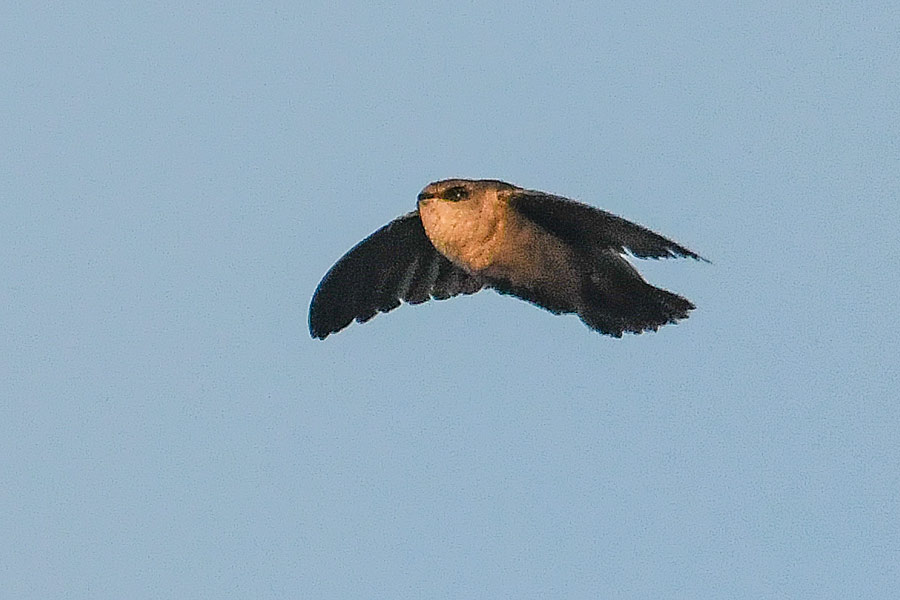
The Vaux's Swift is an aerial specialist. With its long arched wings it soars effortlessly through the air as it forages over open water, marshes, or woodlands where insects are abundant.

In the early evening the swifts coalesce into small flocks that in turn join other flocks to form a swarm that circles around before suddenly descending down the chimney. This photo was taken on May 6 after sunset in the fading light at 9 pm (ISO 16,000!).

After the nesting season the swifts return south. Although no late summer or fall roosting at the Courtenay chimney has been observed, there are many locations down south where the chimney roosting is a regular fall phenomena. Chapman School in Oregon is one such location and information is available at CHAPMAN SCHOOL
WILDFIRE HAZARD - There seems little doubt that the major wildfires in Washington, Oregon, and California have had significant impacts on all wildlife including migrating species like the Vaux's Swift. Besides the smoke itself affecting the birds' metabolism, the fires have destroyed natural roosting sites and devastated insect populations on which the swifts and other birds depend on. There is more information at SMOKE IMPACT.
HUMMER TIME
One of the most eagerly awaited event in March is the annual return of the Rufous Hummingbird. Typically, the first Rufous to arrive in my yard is March 20 - 22, and in most cases it has been a female. It was no surprise this year when my first arrival was a female. The surprise was its early arrival. March 16 was four days earlier than the norm. With the early return I was expecting a reasonable return of Hummers, but that never materialized. By the end of the month there were only 3 or 4 females and no sign of a male. Finally, 3 weeks after the first female return a male showed up, and despite fairly balmy weather for the rest of the month there was virtually no increase in the hummer population. I was disappointed with the low return but more concerned about the possible low recruitment rate for the species. I haven't seen any information about the low return, but they may have experienced a difficult winter or encountered problems during migration. There is also the possibility that the return rate overall was reasonable but just not in my area. So far I haven't seen any reports, studies, or monitoring programs that could provide any insight into the situation. The situation in my yard was a tiny sample size for the island but the few people I talked to had similar low returns.
A small sign of optimism occurred on June 13 when Greg Robertson, who lives down the road phoned to announce that he had a sudden influx of hummingbirds, and they were consuming 3 to 4 cups of nectar a day. The next day there was a noticeable increase at my feeder and for the next 3 weeks my consumption was up to about 2 cups a day from a cup a week. I'm not sure if the sudden increase signalled the arrival of migrants from the north or a slight shift of local populations because forest fires or some other reason.
As if the low number of Rufous Hummingbirds for the breeding season wasn't enough cause for concern, the difficulties don't end there. Just like the Vaux's Swifts the hummers returning south were definitely impacted by the huge wildfires down the coast.

In most years the female Rufous arrives in my yard a couple of days earlier than the male. This year I didn't see a male until 3 weeks later. Hopefully, the males were in the area but just busy chasing females on neighbouring properties. Meanwhile, my females carried on with their maternal duties such as collecting bulrush fluff for their nests.

The question that came to mind was whether the females start their nest building regardless of whether they have mated with a male.
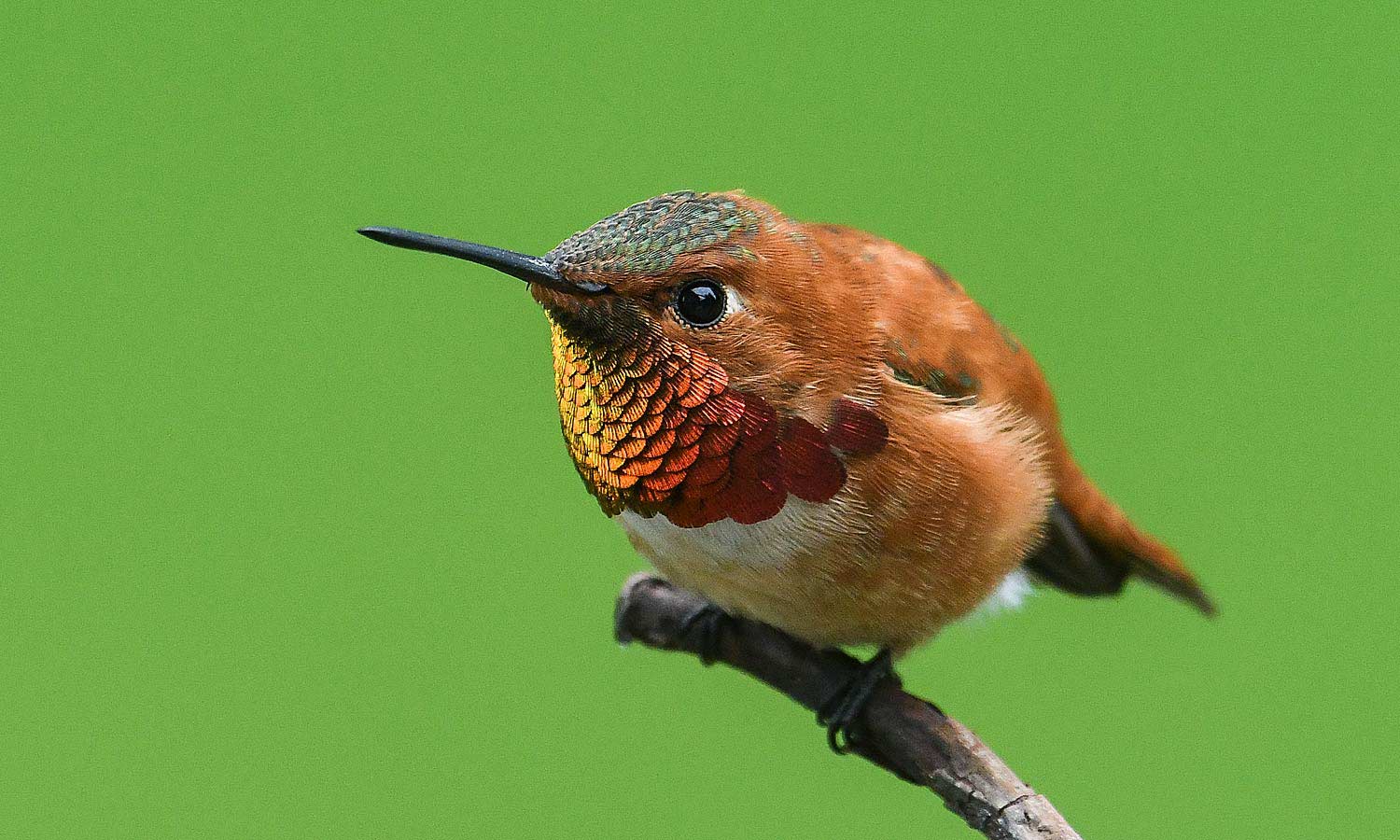
The flamboyant male was 3 weeks late, and I was almost ready to mourn its demise. But, better late than never, and it was a relief to finally see one at the feeder.

With the shortage of females, the male had a lot of spare time to sit around. As usual that provided some quality time for photography.
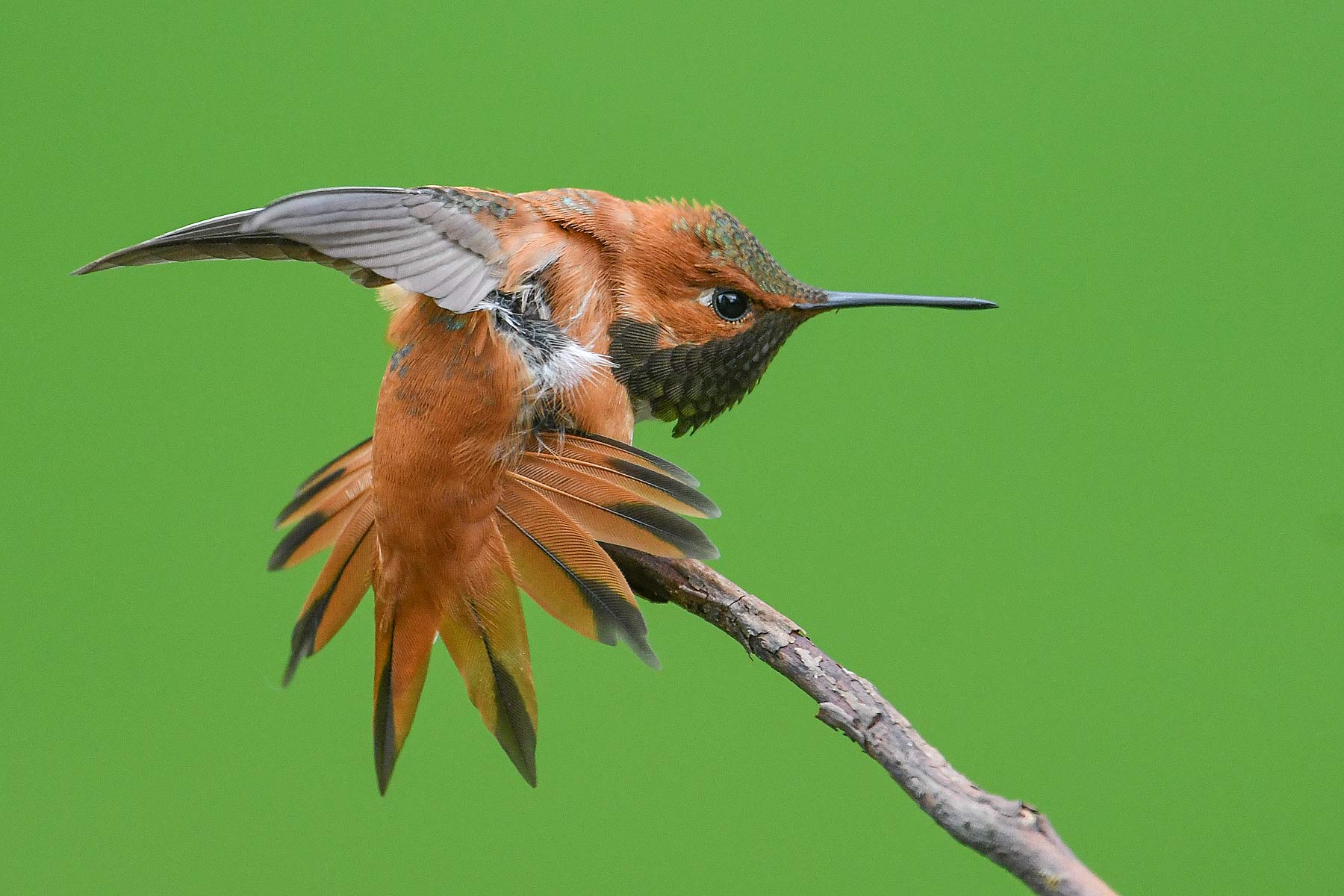
Perhaps it was the lack of females, but the male would disappear for lengthy periods of time. When it returned it would harass the females for awhile then settle down on its favorite perch.
Photo note: This is my favorite pose of the male Rufous, and it was no accident that resulted in this photo. It was the product of patience and experience. Past experience has shown that if the male sits around for any length of time it will eventually stretch and display its tail feathers. For best results I prefer a light overcast sky with no shadows. It probably took about 6 one or two hour sessions to get the desired result.

The juvenile Rufous are the last to migrate and that usually occurs in early July. Their late presence always coincides with the blooming of the honeysuckle and bee balm in my garden. A few females and juveniles are sometimes seen right through August, but they are probably migrants from further north.
YARD BIRDS
As usual, most of my summer photography was done right in my backyard. It's always a treat to enjoy the spring migrants as they settle in and raise their families. This year my main focus was on the Black-headed Grosbeaks. They have always been one of my summer favorites, and I made an extra effort documenting their presence. Before we get to the grosbeaks here's a few other yard visitors.

The Pileated Woodpeckers nest in the forest on the neighboring farm. I hear them regularly, but have seen them less frequently since I told my neighbor that woodpeckers love suet. Now they spend more time at his place. But I still get occasional visits, and it's more of a treat when one stops by. The short red crest indicates that this is a female.

Male Hairy Woodpecker - The Hairy Woodpecker is another backyard regular. It is usually seen on the feeder pole with its bill covered with suet. It was a refreshing change to get a photo of the male drinking from the birdbath.

Fledgling Red-breasted Nuthatch - The Red-breasted Nuthatch is a joy to see any time of the year. It is a regular feeder and garden visitor where it is often seen crawling headfirst down the feeder pole or clinging acrobatically upside down on a sunflower head.. It is a common breeding species and produces at east two broods a year. When it's fledgling time the fluffy little youngsters often congregate around the feeder hoping to be fed.

Juvenile Spotted Towhee - If it's the shape and size of a Spotted Towhee then it's probably a Spotted Towhee. The brown colour of the juvenile is deceiving, but it doesn't take long to moult into adult colours.

Juvenile Pine Siskin - The Pine Siskins are barely noticeable amongst the other yard birds but a few fledglings show up every year.

Juvenile Dark-eyed Junco - The most common bird in my yard is the Dark-eyed Junco. With two or three successful broods a year they were more common than ever.

Fledgling Chestnut-backed Chickadee - Where's my lunch? Like other fledglings the Chestnut-backed Chickadee fledgling is not shy about asking for handouts.
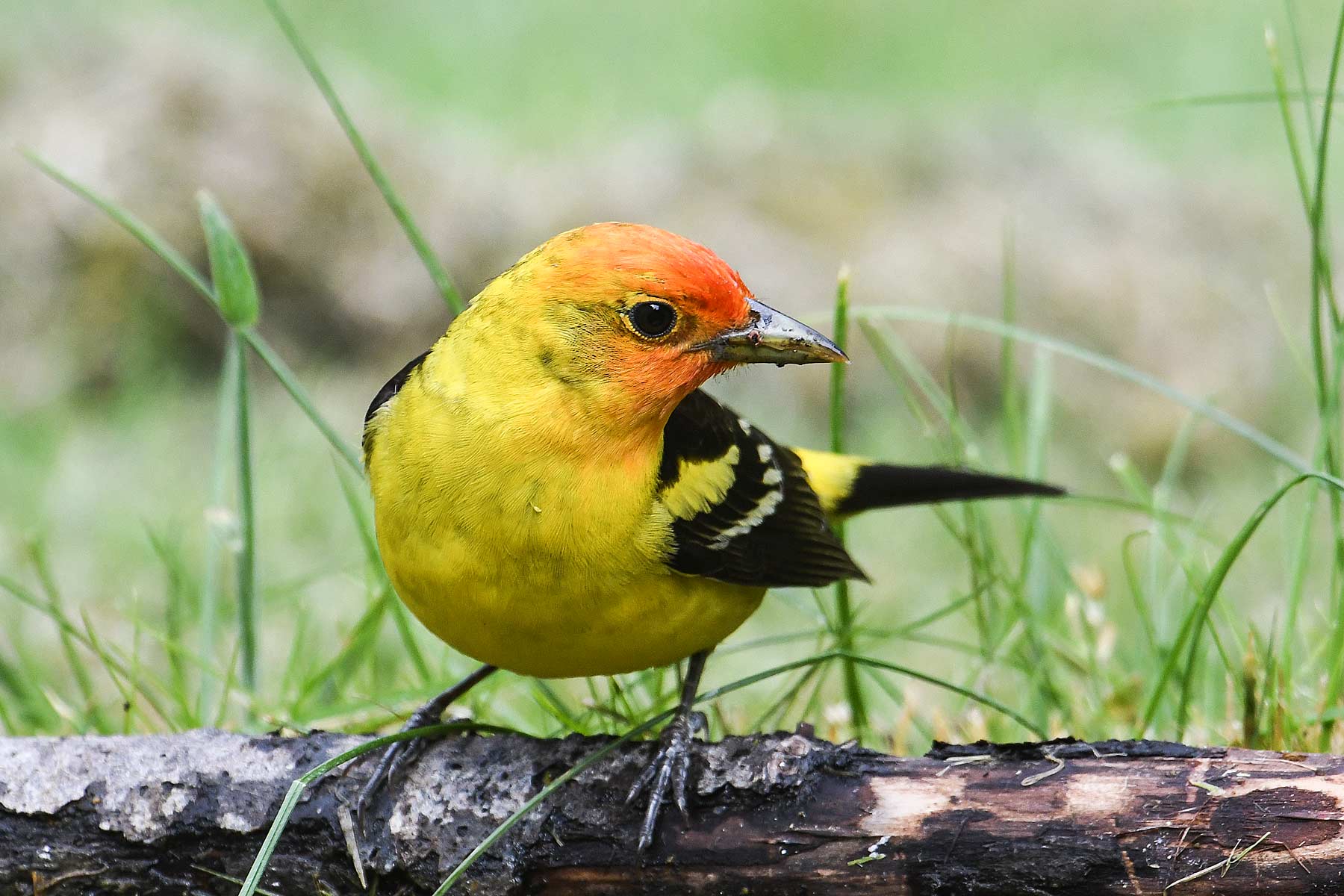
Male - Western Tanager - My yard has been blessed with the presence of a pair of Western Tanagers for the past two breeding seasons. Although the adults were seen periodically at the water bath or in the surrounding trees I still haven't seen a juvenile in my yard.

The male Anna's was around all winter and early spring, but I didn't see it all summer. I'm not sure if it did a summer migration or had other ladies to tend to.

Female Anna's - Although the males get most of the attention, I also enjoy the females. Of course, with the male AWOL I didn't have much choice. Trying to photograph the females by my feeder was difficult because they usually did not hover or sit on any perch except for the feeder perch. Only once during the spring and summer did I see a female sitting on a branch by the feeder. Fortunately, she returned to the branch several times. Of course, the females perching all over the place, but I did my photography from my window by the feeder.

Male American Goldfinch - There were a lot of American Goldfinches in the spring, but they moved on by mid-summer. I was disappointed because I didn't get to see any juveniles at the feeder. One morning I saw about twenty chirping away on the top of some firs next to a giant arbutus. The chorus continued until a hawk (Cooper's?) emerged from the arbutus. I did wonder if the presence of the hawk had any affect on the disappearance of the goldfinches.
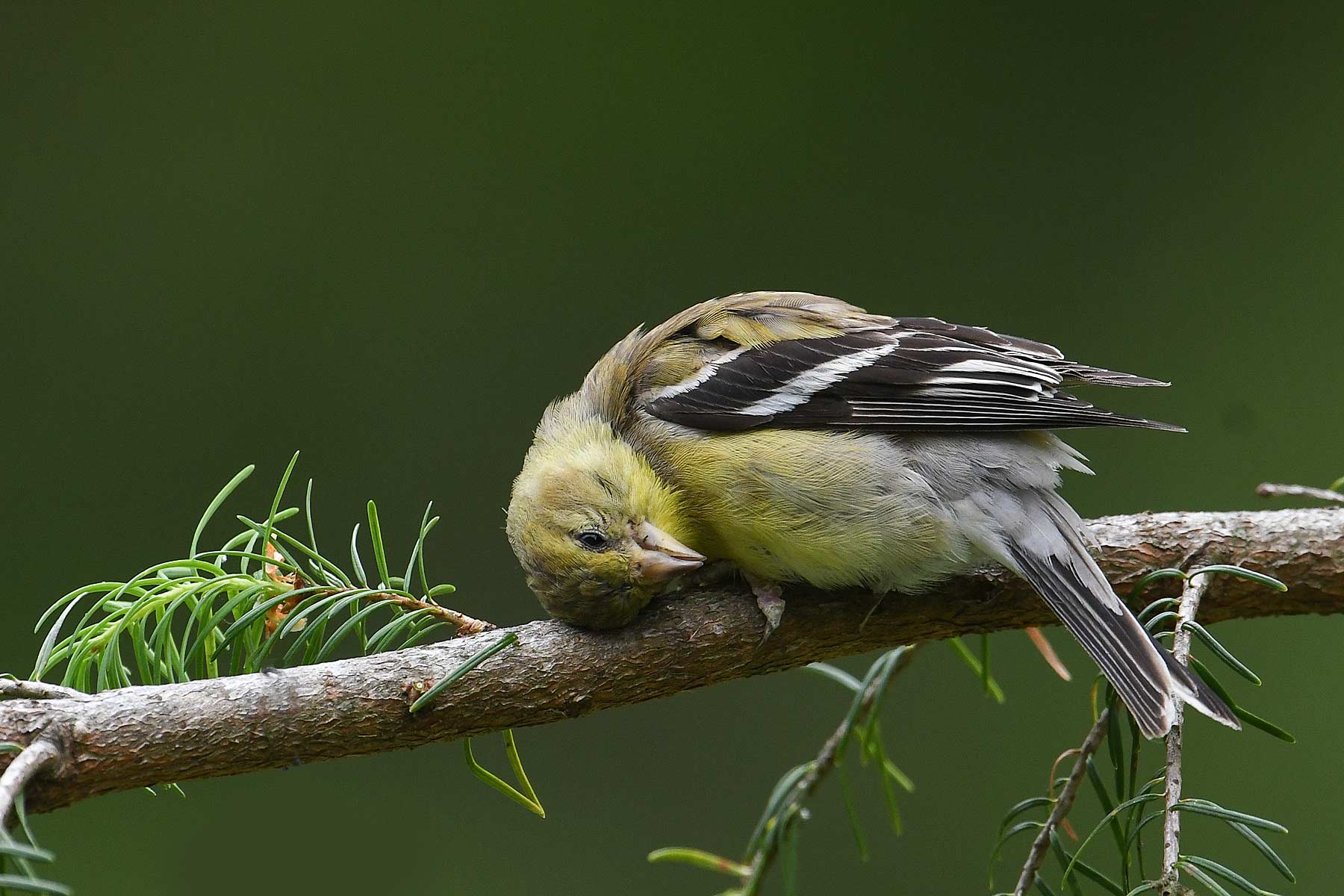
Female American Goldfinch - Not only did the goldfinches disappear for the summer, the usual influx in the fall for the garden sunflower seeds did not materialize. I was especially disappointed since I grew twice the amount of sunflowers as usual.

Adult White-crowned Sparrow - The cheerful White-crowned is another regular breeding species in my yard.
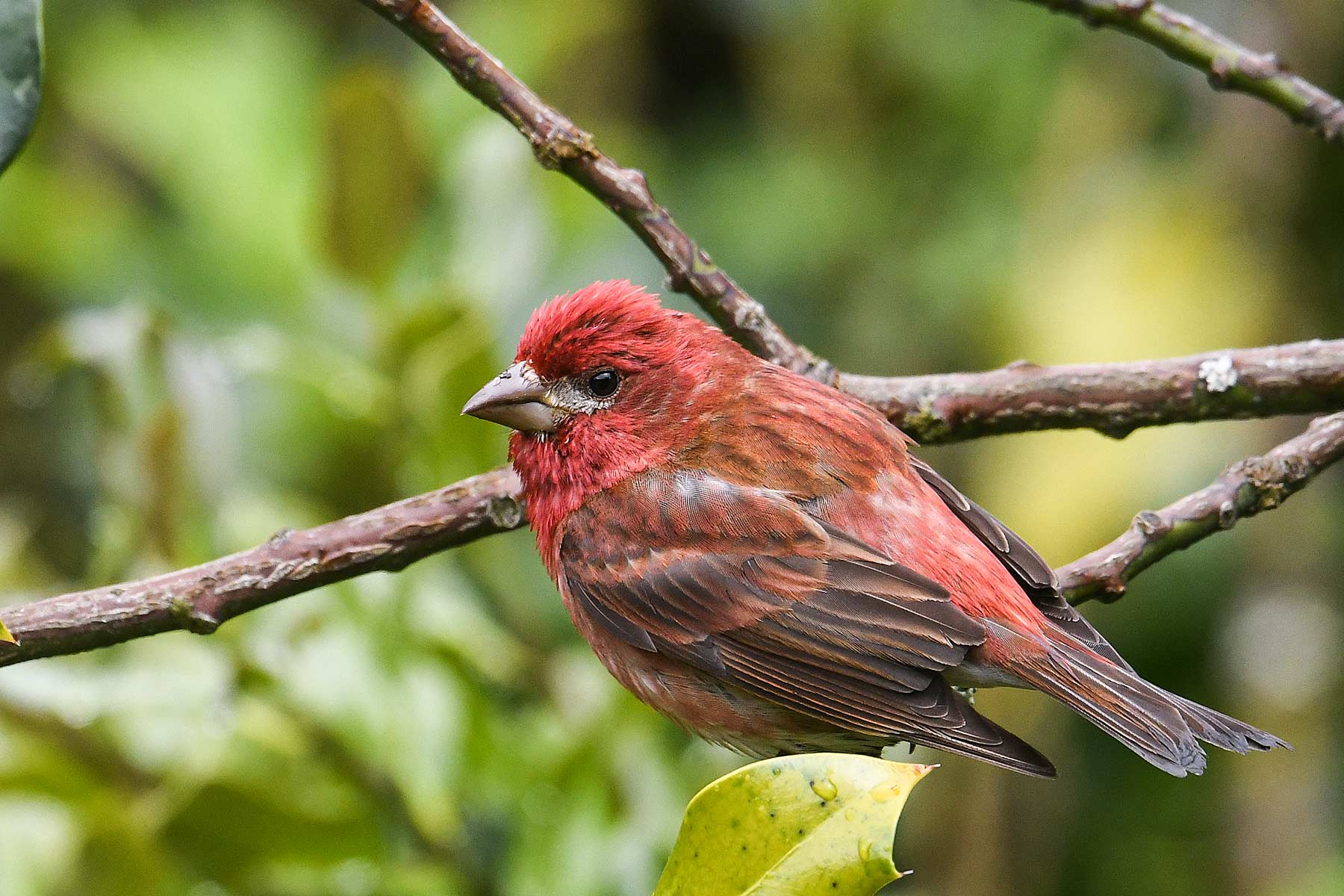
Male Purple Finch - My second most abundant breeding yard bird is the Purple Finch. I'm guessing there are usually two or three breeding pairs, and they each produce at least two broods. l

Last but not least. I had almost given up on my Chipping Sparrows but I finally saw one on the osier dogwood on April 26. I didn't see them as much as usual this year, but I saw the adults catching insects on the lawn and making regular trips to a spot by the pump house. I didn't check, but I'm sure they were feeding the nestlings.
BLACK-HEADED GROSBEAKS
The Black-headed Grosbeak winters in Mexico and is a late spring migrant. The first one to arrive in my yard was a female on May 10. Two days later three males showed up.

The male is striking with its coal-black head contrasted against its bright orange chest. The black and orange is similar to the Monarch butterfly which is ironic because the Black-headed Grosbeak is one of the few birds that can digest the toxin-filled Monarchs. Both creatures winter in Mexico and the result is not good for the Monarchs.

The varying degrees of blackness on the head of the head on the males reflect their maturity. The blacker the head, the older the bird.

This was the youngest of the three males.There may have been more but I couldn't be sure. I wondered if all three males were mature breeding birds, but I had no way of finding out.

The colours on the female were more faded, but the most striking features were the supercilium above the eye and the streaked undersides.

The back and wings on the female were also brown and not black like the male.

Finally, a juvenile Black-headed Grosbeak! Notice how white it is. It was extremely shy at first, and I didn't see it come to the feeder.

Eventually hunger overcame fear, and it made its way to the feeder.
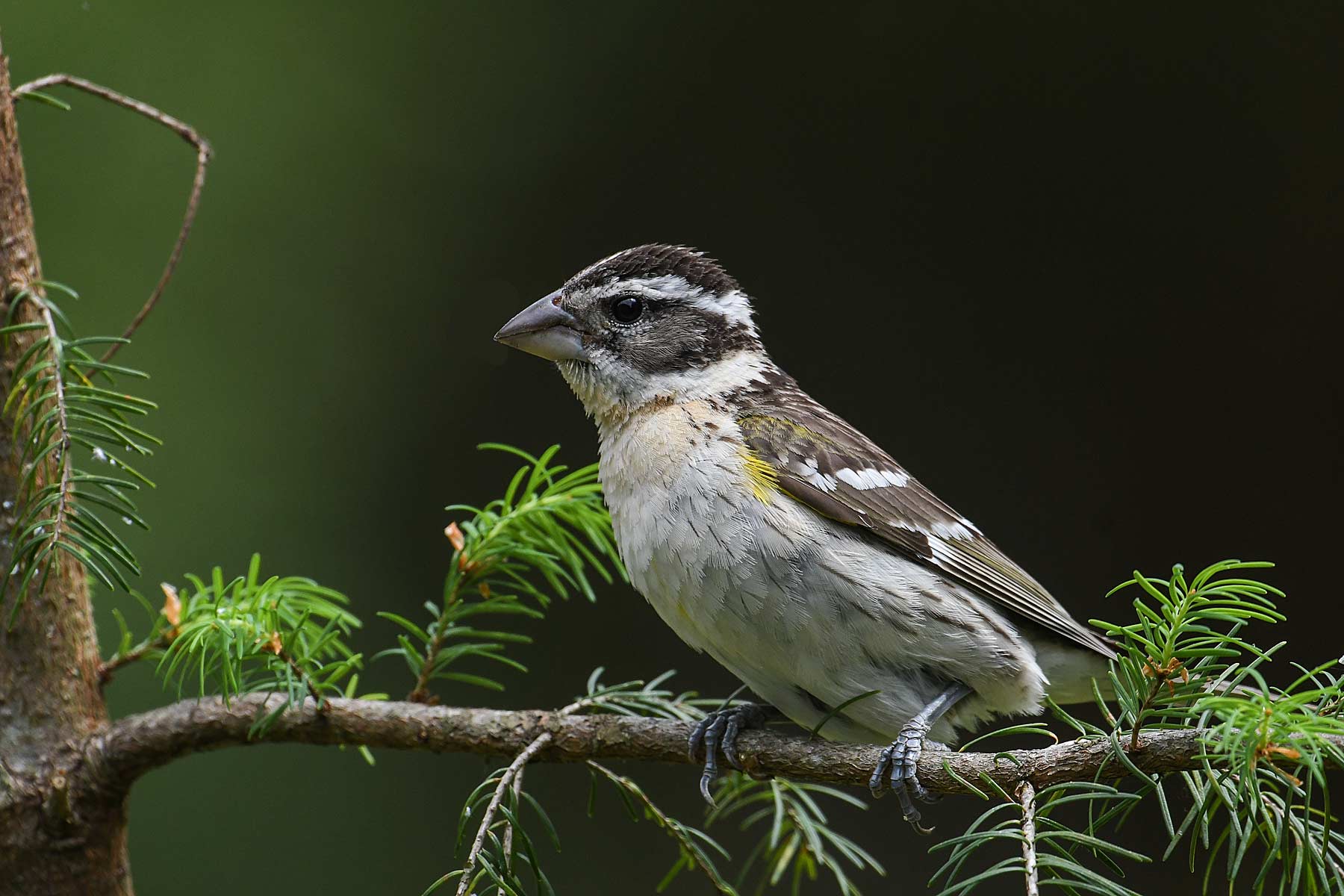
A NEW YARD BIRDS
It was very fitting that while my focus was on the Black-headed Grosbeak my first new yardbirds for the year was a pair of Evening Grosbeaks. I'd only seen Evening Grosbeaks on the island twice and the last was over a decade ago.

It was the afternoon of June 3 when I glanced out the window and saw a large, chunky yellow bird at the seed feeder. I knew right away that it was a male Evening Grosbeak.

After the male had a snack it flew to the osier dogwood where the female was perched. The female then flew to the branch where the feeder was hung and proceeded to have her lunch. I was fortunate to have the camera handy because shortly after they both left and never returned.
The whole incident took less than five minutes, and I was fortunate to be in the right place at the right time.
I SURRENDER
After 10 hours of playing catch up I'm throwing in the towel. I'm almost there but I'm way past the point of diminishing returns. Hope you enjoy the photos.
*********************************************************************************************

*********************************************************************************************
Bird Poster
My poster is on display at: Victoria - Swan Lake Nature House. (Note: This poster has been produced in a more manageable size and is now available for $20 unlaminated and $32 laminated.)

*********************************************************************************************
PUBLICATIONS




